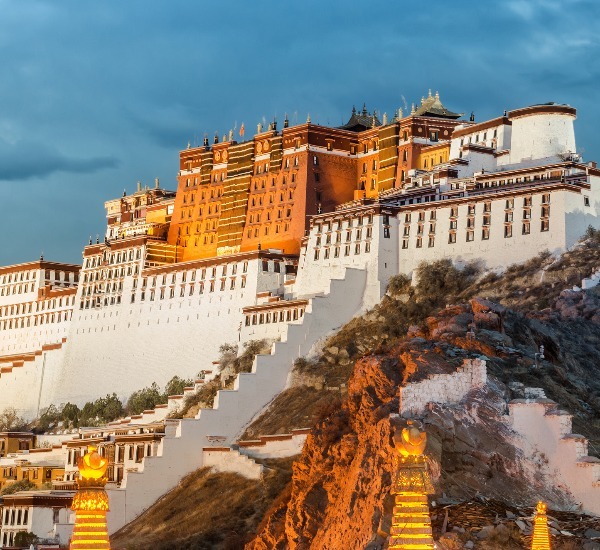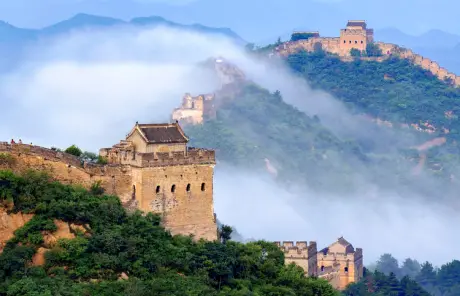20 Good Facts To Authentic Chinese Culinary Adventures
20 Good Facts To Authentic Chinese Culinary Adventures
Blog Article
Top 10 Tips For Regional Specialties When Shopping In China
1. Do your research before you goTip Learn what each place is known for. Suzhou is one example. It is known for its silk. Jingdezhen, for its porcelain and Tibet, for its thangkas.
Pro: It enables you concentrate on shopping time and avoids time wastage.
Con: You must be ready and aware of the highlights of the region.
2. Buy Local to Guarantee the authenticity of your purchase
Purchase directly from the vendor to ensure authenticity and quality.
Pro: Lowers the risk of copyright products and supports local artisans.
Cons: Travel to rural or less tourist-friendly regions might be required.
3. Visit the Artisans and Workshops
Look for small shops or hubs of artisans instead of generic shops.
Pro: Gives you a better understanding of craft and guarantees that you are buying directly from creators.
Con: Products created by hand can be expensive and hard to negotiate.
4. The Cultural Significance of Language
Discover the historical context of jade carvings, cloisonne and calligraphy.
Pros: You'll enjoy your purchases more, and they will have a an even deeper significance.
Pro It takes time to understand the cultural nuances.
5. Be sure to check the quality
To make sure you're happy with the quality, check to see if items such as tea, ceramics or embroidery meet your standards.
Pro: It will protect you from disappointment since you'll get exactly what have to.
Cons: You need some guidance or expertise to know what high-quality merchandise is.
6. Beware mass-produced products
It is important to look for products that are original and handcrafted rather than replicas that are mass-produced.
Pro: Ensures that you bring home a valuable and truly special souvenir.
Con: It's more costly and difficult to locate genuine craftsmanship.
7. Compare Prices
Tips: Compare prices from different shops or at stalls the same product.
Pro: Aids you identify reasonable price ranges and avoid being overcharged.
Cons: Can be time-consuming, particularly in large markets.
8. Purchase Tea from trusted vendors
Tip Tips - In areas like Hangzhou or Fujian you can go to reputable Tea Houses for Longjing and Tieguanyin.
Pro: Guarantees authenticity and superiority.
Con: Tea of good quality can be costly and difficult to verify for newcomers.
9. Local Customs
In certain areas there are certain regions where sellers may expect that you negotiate.
Pro: Shopping in a multicultural environment can be fun.
A misunderstood understanding of customs can cause awkward situations.
10. Pack Wisely
You should plan the way you'll transport heavy or fragile regional specialties such as ceramics or silk home.
Pro: This service guarantees that your items arrive without damage.
Cons: It can increase logistical problems and cost to shipping.
The benefits of shopping for Regional Specialties
Unique Souvenirs: Regional specialties are exclusive items that cannot be that can be found anywhere else.
Cultural Immersion: By buying local goods, you will get to know the history and craftsmanship of your area.
Support for artisans Direct purchases made from artisans support local economies.
Pros and Cons of Shopping Regional Specialties
Security Concerns: The risk of purchasing fakes or low-quality versions.
Transporting fragile or heavy objects isn't easy.
More expensive: Real regional products can be costly, especially handcrafted goods.
Follow these tips to ensure you make meaningful and lasting purchases during your journey to China. See the top learn why this spot is so famous for website recommendations including shaoxing wine the best yellow wine in china, four gentlemen in chinese culture, entertainment in hong kong, chinese kites a phoenix shaped kite, some gifts from china, the color of dress in china, south luogu laneone of the oldest neighborhoods in beijing, xiamen, shanghai portman acrobatic show one of the best acrobatic shows in shanghai, eating in fuzhou and more.
Top 10 Tips For Photography And Fees When Visiting Temples In China
1. You can plan your budget by looking up ticket prices before you go to the venue. Plan your budget by researching ticket prices in advance.
Pro You'll be able to prepare the correct amount in electronic or cash payment and stay clear of unpleasant surprise.
Con: Unexpected expenses, such as fees for special exhibitions, can arise.
2. Bring cash or a digital payment
Tips: Some temples only accept cash, or the most well-known Chinese payment methods, such as WeChat Pay or Alipay.
Pro: Ensures a smooth transaction without delays in payment.
Cons: There aren't many options for payment options for foreigners who aren't familiar using digital applications.
3. Look for signs that read "Photography"
If you're unsure if photography is permitted, be sure to look for signs. Some temples don't allow photography within sanctuaries, or in close proximity to sacred artifacts.
Pro: Reduces the risk of unintentional disobedience or rule-breaking.
Con: Rules may vary among different parts of the temple, which requires extra care.
4. Avoid Flash Photography
Even if photography is permitted in a specific zone, it is best to be careful not to use flash. It can damage the artwork, or cause disturbance to worshipers.
Pro: Protects and improves the temple’s environment.
Poor lighting can result in photos that are less than optimal.
5. Respect the privacy of worshippers
Do not take photographs of religious rituals or people praying, unless they have given you permission.
Pro shows an understanding of culture and respect for personal space.
Con: It could limit your ability to capture the temple's atmosphere completely.
6. Drone restrictions to follow
Tip. Drones are generally not permitted in temple areas. Check the local regulations before using a drone to take photos from above.
Pro: No fines, no confiscation.
Cons: Limits the opportunities for unusual angles in photography.
7. Prepare for Additional Fees
Tips A few temples charge an extra fee for photography permits. This is particularly applicable to equipment such as DSLRs as well as tripods.
Pro: Makes sure you have the ability to take high-quality photographs legally.
Cons: Adds to the total cost of the trip
8. Dress sensually
Tips: Respectful attire is crucial in temples. Unsuitable clothing can result in entry restrictions or the refusal of entry.
Pro: Shows respect to the religious setting and helps to blend into the crowd.
Con: More preparation is needed Particularly in hot weather.
9. Beware of crowds when taking photos
Visit the site in the early morning or late afternoon to avoid crowds, and also take photos without obstructions.
Pro: Enhances your experience by taking better photos.
Cons: You might have to change your schedule which is not always convenient.
10. In Doubt, Ask for permission
If you're unsure of the photography rules and photography, inquire with the temple staff for clarification or check signs.
Pro: It helps you avoid infringing on the rules.
Con: Language barriers might make communication difficult.
Pay attention to Fees and Photographic Rules.
Respect cultural diversity:
Artifact Preservation: Guards fragile artifacts and structures.
Positive Experiences Avoiding confrontations with temple staff and worshippers.
Legal Compliance: Aids in avoid paying fines for violating photography laws.
Cons of Following Fees and Photographic Rules
Additional charges: Entry fees or photography permits may add up.
Restricted Creativity: Limitations may make it difficult to capture the perfect photo.
Language Barriers: Unability to read local signage or converse with employees.
Time-consuming research: Preparing ahead takes extra effort and time.
By adhering to the rules and fees for photography will ensure you will have a pleasant peaceful, respectful and legal visit to China's stunning temples while also preserving their sacred and cultural integrity. Check out the best view information about this spot for blog advice including shopping in dunhuang, guanlin temple, shopping in suzhou, shenzhen golf club, ancient dapeng fortress, chinese knot which has a long history and a symbolic meaning, tips for identifying copyright, eating in fuzhou, hua diao the most famous shaoxing yellow wine, blue dragon temple and more.